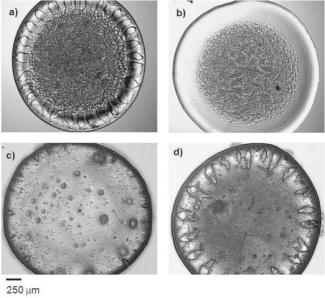2 students and one PhD student, winners of the EUR Manutech Sleight conference student prize
- Formation
- Institut d'Optique
EUR Manutech Sleight Conference Student Prizes: The Institute of Optics Graduate School in the spotlight!
The students and doctoral students of the Institut d'Optique Graduate School based at the Saint-Etienne site or at the Hubert Curien Laboratory (tutelage : Institut d'Optique, Jean Monnet University, University of Lyon and CNRS) had the opportunity this week to take part in the 5th international conference of the Manutech SLEIGHT University Research School (Light-Surfaces Health and Society Engineering) and to present their work to an e-parterre of around 80 to 100 researchers and students during the two sessions dedicated to student and doctoral work. A special jury designates the prize for the best presentation in each category.
The Institut d'Optique can be very proud to have 3 winners!
Congratulations to the winners Clotilde Pillot and Romain Bacri, in their 2nd year in Saint-Étienne (Master's student session/best pitch prize), and Thomas Labardens (SupOptique 2018) Bordeaux site (PhD student session/best paper prize).
_____________________
MASTER STUDENT Session
prize for the best PITCH
awarded to Clotilde Pillot and Romain Bacri | in 2nd year at Saint-Etienne
Search for biomarkers for synovial fluids by image processing
(Work carried out in TP-project, under the supervision of Thierry Fournel and Mathieu Hébert)
Osteoarthritis is a very painful and widespread pathology that is difficult to diagnose. The "Synodiag" entrepreneurial project, supported by Pulsalys in Lyon, is developing innovative solutions to detect the disease using synovial fluid, the liquid present in the joints, which can be seen in the microscope images below. But what is the signature of the pathology? How can it be evaluated automatically? Clotilde Pillot and Romain Bacri had the chance to participate in this project by exploring a few avenues by image processing, with very promising initial results.
Gouttes de liquide synovial vue par microscope. (c) K. A. Esmonde-White et al., J Biomed Opt. 2009; 14(3): 034013.
A first prize ex-aequo was awarded to Shanmugha Sri Siva Kalidindi, computer science student, for his paper Multi-class classification in a Natural Language Processing challenge.
In addition to computer science and physics students from Jean Monnet University, many other SupOptician students also competed brilliantly:
- Emmanuel Kim and David Rodin, Gloss measurement techniques for watching the degradation of Soulages masterpieces.
- Lucas Goncalves and Leo Jourdy, Color and fluorescence study for dental composite materials.
- Corentin Le Tallec and Antoine Pielot, On the relationship between speckle and BRDF.
- Melanie Nguyen, Artistic halftone screening, Fouad Bouzerara, Jonathan Chartier, Baptiste Jans and Simon Steinlin, Mathematical methods for the generation of graphical patterns.
_______________________
Doctoral students session
Best Paper Award
awarded to Thomas Labardens | SupOptique 2018 - Bordeaux site
Study and simulations of speckle effects on BRDF measurements at very high angular resolution
(Thesis at the CNAM and the Hubert Curien Laboratory, under the direction of Gaël Obein and Mathieu Hébert, with the participation of Pierre Chavel, Lionel Simonot and Yvain Sortais).
The acronym BRDF regularly returns to the ears of opticians who are interested in the appearance of materials, whether real or virtual. It designates this multiparametric function which describes the way light is scattered by a surface, depending on the direction of incidence, position on the surface, direction of observation, wavelength, polarisation, etc. It has become an essential tool for the characterisation of materials, or for the production of images for synthesis or video. It is therefore essential to know how to measure it accurately on large numbers of materials. It has become a measurand for metrology centres. National metrology centres in several countries, including LNE-CNAM under the supervision of Gael Obein in France, have embarked on defining standards and building high-resolution angular measurement benches. The European BxDiff project, which is funding this thesis, aims to remove several scientific obstacles.
To measure a BRDF with high angular resolution, the incident beam must be highly directional (very narrow solid angle), resulting in a high degree of spatial coherence - which contradicts the universally accepted definition of BRDF as a quantity based on incoherent light. This very coherent incident beam generates a very marked speckle effect (figure below), which Thomas' thesis aims to characterise, simulate... and eliminate!
BRDF measured around the specular direction (45° around the surface normal) of a glossy surface, showing a strong granular appearance characteristic of the speckle. On the right, BRDF plotted as a function of the angle of observation in the plane of incidence, showing the fluctuations due to the speckle © CNAM

